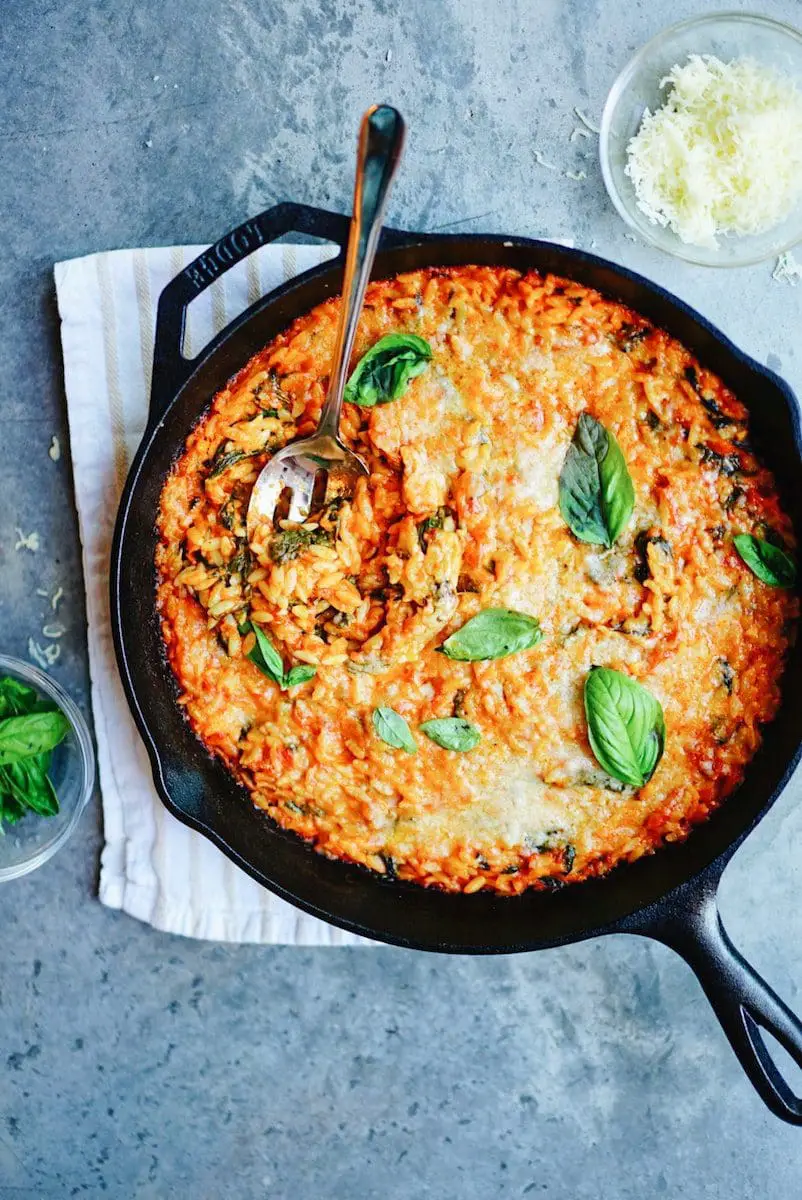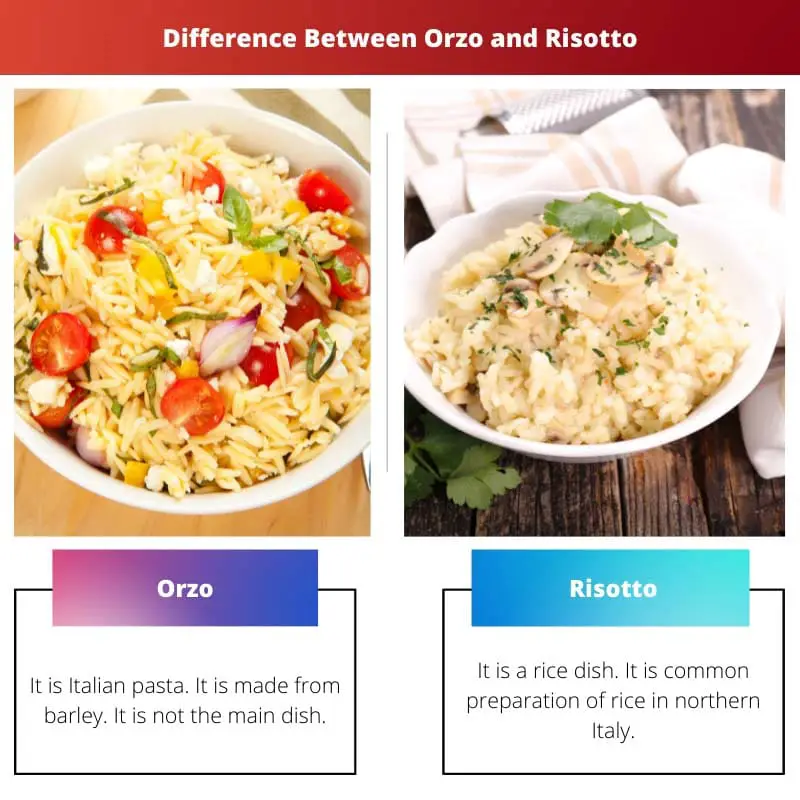Orzo and Risotto may sound similar as both of them are made of cereal grains. Rice is used as a staple food and even for drinks, but barley is used as bread.
Key Takeaways
- Orzo is a type of pasta that is shaped like rice, while Risotto is a type of rice dish that is cooked in broth until creamy.
- Orzo is commonly used in soups and salads, while Risotto is served as a main course or side dish.
- Orzo is cooked by boiling, while Risotto requires a specific cooking method where hot broth is gradually added to the rice while constantly stirring.
Orzo vs Risotto
Orzo is an Italian pasta made with barley. Orzo can be used in the preparation of salads. It can also be taken as a soup. It has different flavours and colors. It contains high protein. Risotto is a rice dish in which vegetables or meat can be added. Cheese is also added to risotto to make it creamy. Wine is also added to the risotto.

Orzo is a type of pasta. It looks like grain. Orzo can sometimes be confused with rice, but it is pasta. It is also known as Italian Rice. It is widely used in Greek. It is eaten with soup.
Risotto is a traditional dish. It is very famous in Italy. It is made from rice and broth. It looks very similar to grains. It is made creamy by stirring it into the broth. Wine is also added in the preparation of Risotto.
Comparison Table
| Parameter of Comparison | Orzo | Risotto |
|---|---|---|
| Main Ingredient | Barley | Rice |
| Flavors | Yes | No |
| Type of Dish | No | Main Course Dish |
| Eaten with | Soups | None |
| Other bases | Wheat | None |
| Location | Turkey, Greece | Italy |
What is Orzo?
It is Italian pasta. It is made from barley. Rather it is mixed with some other foods to make a complete dish. It can also be used to prepare salads.
It is used in soup as well. Orzo very easily catches flavour in it, due to which orzo is very much liked in food. Orzo is also found in many colors and flavours.
Whole-wheat orzo is a healthier choice as compared to regular orzo. The content of protein and fibre is high in whole-wheat orzo. Orzo is an Italian word for barley.
Orzo is used in broths, and it is considered a side dish. It is nutritious as it has high protein in it. It may cost more, but spending on good food is always worth it.
| # | Preview | Product | |
|---|---|---|---|
| 1 |

| Barilla Orzo Pasta, 16 oz | Check Price on Amazon |
| 2 |

| Whole Foods Market, Organic Orzo, 16 Ounce | Check Price on Amazon |

What is Risotto?
It is a rice dish. It is common preparation of rice in northern Italy. The broth is needed, so it is prepared either from vegetables or meat, or fish.
It needs cheeses or butter to make it creamier to taste. It is fluid in resemblance. It is always served in flat dishes. It is spread easily due to its fluidity.
The preparation starts with sauteing onion in butter, and then rice is added so that the grains taste creamier. Then the wine is added as per their choice, red or white.
It can also be replaced with barley and can be made into barley risotto. It takes up orzo to make barley Risotto. Orzo looks like rice, but it is pasta.

Main Differences Between Orzo and Risotto
- Orzo is used in soups, but Risotto cannot be added to soups.
- Orzo can be found in wheat, but Risotto is only available in rice.






